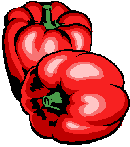CLEMENTINE: A small mandarin with bright orange skin and has no
pits. One of the most popular Mandarin because of their sweetness and aroma flesh.
IMPERIAL: A small flat Mandarin with a smooth
orange colour skin contains a few pits. Very sweet.
ELLENDALE: An Australian variety, can be very large with bright
orange skin where the skin is more difficult to peel. The flesh is very tangy and very juicy.
SATSUMA: This is the largest Mandarin around from
Japan, have
loose skin and a refreshing tart flavour and contains a few pits.
 TANGELLO: This is crossed between a Mandarin and
Grapefruit and have a regular shape more like a pear. The flesh has a refreshing tart flavour and can be sweet or a
little tangy.
TANGELLO: This is crossed between a Mandarin and
Grapefruit and have a regular shape more like a pear. The flesh has a refreshing tart flavour and can be sweet or a
little tangy.
MINNEOLA: Similar to the Tangello but with no pits.
EMPEROR: No description.
DANCY: No
description.




